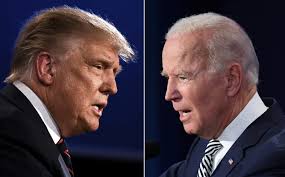Democratic presidential candidate Joe Biden has called climate change “the greatest threat to our security.”
According to The Wall Street Journal, “Mr. Biden calls climate change an urgent crisis and has proposed the most aggressive climate agenda of any major presidential finalist ever, analysts say. He proposes to marshal vast government resources, with $2 trillion in spending and plans to make environmental policy and climate change a driving force in decisions on the economy, infrastructure, transportation, social justice, foreign relations and more.”
In contrast, President Trump pulled out of the Paris agreement, which has been touted as a “global action plan” designed to save the world from climate change.
But the Paris agreement is voluntary and the 195 countries participating, including China, have done less to reduce carbon emissions than the United States. Fracking has produced record amounts of natural gas in the U.S. and natural gas produces about half the amount of carbon emissions as oil.
“Mr. Trump has challenged the science documenting global warming and cast Mr. Biden’s strategy as a threat to U.S. businesses,” according to The Journal. “He vows to restrain the government influence Mr. Biden wants to expand. His campaign’s second-term agenda doesn’t mention climate, listing clean air and water broadly as priorities.”
Biden has called the Green New Deal “a crucial framework for meeting the climate challenges we face,” but he has developed his own plan, which would commit the U.S. economy to net-zero emissions by 2050.
He would call for $2 trillion in direct government spending on clean energy, new laws to tax carbon, executive action on methane emissions, stricter fuel-economy standards, nationwide energy efficiency standards and upgrading four million buildings over four years to meet high standards for energy efficiency. He also called for building clean infrastructure and leveraging the federal government to purchase zero-emissions vehicles.
He has also endorsed a ban on fracking, but banning fracking is not part of his environmental plan. He would, though, oppose any new drilling, including fracking, on public lands.
Like the Green New Deal, his environmental plan includes non-environmental social goals, such as investing more in low-income communities and communities of color.
Stephen Moore, who served as an economic advisor to President Trump, said that at least $1 trillion of U.S. economic output is related to fracking and more than 1.5 million Americans are employed by the industry. A PricewaterhouseCoopers study found that at least 4 million American jobs are tied to fracking.
President Trump has also been criticized by environmentalists for overturning many environmental regulations, but some consider the regulations to be too time consuming and expensive to enforce, while providing little benefit.
“The President has directed more efficient implementation of air quality standards, and America’s air is cleaner today than we have seen in recorded history,” according to RealClear Energy. “Emissions of common air pollutants declined by 7% since 2017, and will continue to decline in the coming years. In 2019, the U.S. had the largest absolute decline of energy-related carbon dioxide emissions of any country in the world.”

